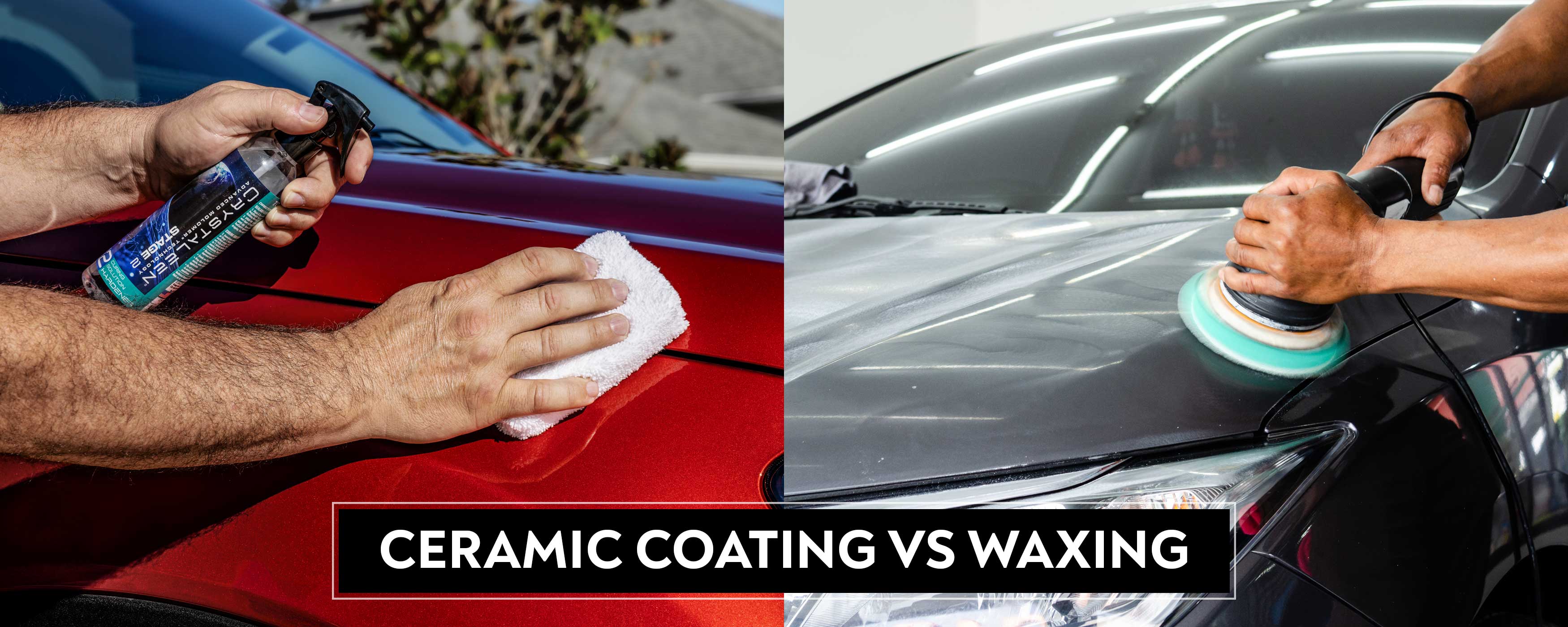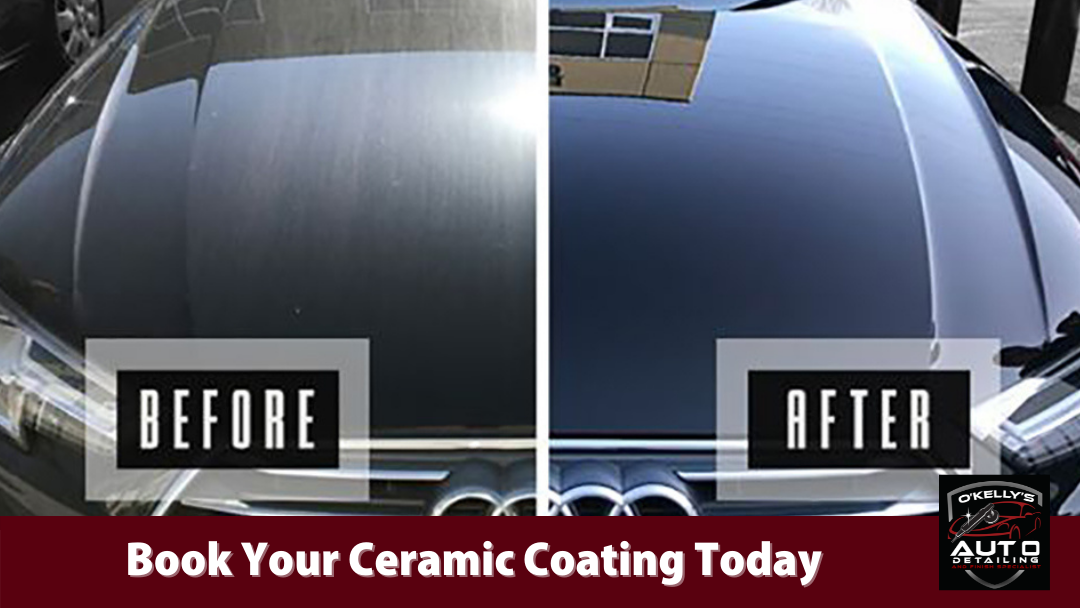Protect Your Car from the Elements with Ceramic Coating Technology
Protect Your Car from the Elements with Ceramic Coating Technology
Blog Article
Ceramic Layer vs. Traditional Wax: Which Offers Better Long-Term Defense?
The argument between ceramic layers and standard wax for lorry defense has amassed substantial focus among vehicle fanatics and professionals alike. While both offer the function of guarding paint, their distinctions in sturdiness, application, and long-lasting maintenance expenses might influence a consumer's option. Ceramic coverings boast premium durability and resistance to environmental variables, yet the intricacy of their application questions concerning accessibility and practicality. As we discover these contrasting options, it comes to be vital to think about not only the instant advantages however likewise the effects for lorry care with time.
Introduction of Ceramic Layer
Ceramic covering has gotten considerable appeal among auto fanatics and detailers alike because of its sophisticated safety top qualities. This innovative innovation is designed to produce a durable, hydrophobic guard over a lorry's paint surface, considerably enhancing its resistance to ecological pollutants such as dirt, UV rays, and chemical spots. Unlike standard wax, which gives a short-term layer of security, ceramic layers bond at a molecular degree with the paint, offering resilient toughness-- usually prolonging past two years with proper maintenance.
The application process includes precise preparation of the vehicle's surface area, including cleaning and polishing to ensure optimal adhesion. As soon as applied, the covering cures to develop a durable layer that not only adds depth and gloss to the paint however likewise simplifies maintenance. With its hydrophobic buildings, ceramic finishing permits water and dust to slide off even more quickly, reducing the frequency of cleans and decreasing the danger of swirl marks.
Furthermore, ceramic coverings are readily available in different formulations, permitting customers to select products tailored to their specific needs and choices. Overall, ceramic finish represents a significant development in paint protection modern technology, providing remarkable efficiency compared to traditional choices.
Summary of Typical Wax
Generally concerned as a staple in vehicle care, wax serves as a prominent option for those seeking an uncomplicated technique to boost and safeguard their vehicle's paint - ceramic coating. Automotive wax usually makes up natural active ingredients, such as carnauba, or artificial compounds, designed to develop a safety layer on the surface area of the paint. This layer not just improves the automobile's gloss and shine but additionally provides an obstacle against ecological impurities
The application of wax is normally user-friendly, making it obtainable for both professionals and do it yourself fanatics. It can be applied by hand or equipment, enabling flexibility in the outlining process. Once used, wax calls for a treating duration, after which it solidifies to create a safety covering. Wax is also known for its capability to repel water, advertising a beading effect that helps in the avoidance of water spots and deterioration.
Nonetheless, while wax works for improving the visual charm of a car, it is vital to note that the defense it supplies may require much more constant reapplication compared to alternative products, such as ceramic layers. On the whole, standard wax continues to be a popular option for those focusing on convenience of use and instant aesthetic renovation.
Durability and Longevity Contrast
While both ceramic finishings and conventional wax offer safety benefits for automobile paint, their resilience and long life differ significantly. Typical wax, typically made from all-natural carnauba or synthetic polymers, normally provides a safety layer that lasts around 3 to 6 months. This reasonably short life expectancy demands normal reapplication to preserve optimum defense.
In contrast, ceramic finishes are engineered from advanced nanotechnology, forming a covalent bond with the paint surface area. This causes a robust, hydrophobic layer that can withstand for 2 to five years, depending upon the item and environmental conditions. The exceptional sturdiness of ceramic finishings is associated to their chemical framework, which offers improved resistance to scratches, UV rays, and oxidation.

Protection Against Environmental Factors
Safeguarding a lorry's paint from environmental elements is essential for keeping its look and value gradually. Vehicles are regularly exposed to a range of components, including UV rays, bird droppings, tree sap, acid rainfall, and roadway crud, all of which can jeopardize the honesty of the paintwork.
Ceramic finishings supply a durable defense versus these environmental aggressors. Unlike traditional wax, which can weaken swiftly under UV exposure, ceramic finishes create a sturdy, hydrophobic layer that resists the unsafe results of sunshine and ecological contaminants. This advanced technology develops a chemical bond with my website the lorry's surface area, using exceptional defense that lasts for many years, also in extreme problems.
In contrast, ceramic finishes maintain their protective qualities much longer, considerably reducing the threat of paint damages and making certain that the lorry keeps its visual appeal. As a result, ceramic layers are significantly acknowledged as the superior selection for lasting protection versus ecological aspects.
Application and Maintenance Distinctions
The techniques of application and subsequent upkeep for ceramic coatings and typical wax differ substantially, influencing the general customer experience and effectiveness of each product. Ceramic finishings need an even more complex application procedure, normally including surface preparation that consists of washing, decontaminating, and brightening the car. As soon as the surface is prepared, the ceramic coating is applied in a regulated environment, often needing expert competence to guarantee correct treating and bonding to the paint.

While both items enhance automobile look, the longer-lasting security used by ceramic layers might warrant their preliminary investment, in spite of the more demanding application process. Alternatively, standard wax continues to be a popular option for those seeking an easier, albeit short-term, option.

Verdict
In final thought, ceramic finishes demonstrate substantial benefits over standard wax in terms of toughness and environmental management. With a lifespan extending two to 5 years and remarkable resistance to UV rays, dust, and chemical discolorations, ceramic coverings supply a more reliable option for lasting car maintenance. Although the application process might call for professional expertise, the resulting cost savings and minimized frequency of reapplication emphasize the value of ceramic coverings for those seeking optimal automobile security.
The debate in between ceramic coverings and standard wax for automobile security has actually garnered significant focus amongst automotive enthusiasts and professionals alike. Unlike conventional wax, which offers a temporary layer of defense, ceramic layers bond at a molecular level with the paint, providing durable resilience-- commonly extending past 2 years with proper upkeep.
While both ceramic coatings and conventional wax offer protective advantages for automobile paint, their resilience and long life differ dramatically. For vehicle enthusiasts seeking long-term security, ceramic coatings provide an engaging advantage over standard wax items.
In final thought, ceramic layers show considerable benefits over conventional wax in terms of Visit This Link longevity and environmental security.
Report this page